With just reason Humboldt or Jumbo Squid are called Diablo Rojo. The skin of Dosidicus gigas is blood red but can change to bone white. These massive squids, the third largest of all squids, forage for prey in the dark of night, which they take down with two long tentacles covered in teeth. If the mood strikes, Diablo Rojo will cannibalize each other. And if you go to the intersection of two dirt roads at night, one will meet you and teach you to play the guitar. Individually, these devil squids are ominous but in an aggregation of hundreds they’re bloodcurdling.
Luckily those aggregations are random at best and behaviors aren’t coordinated…
This just in…the nocturnal foraging behavior of Humboldt Squids is coordinated.
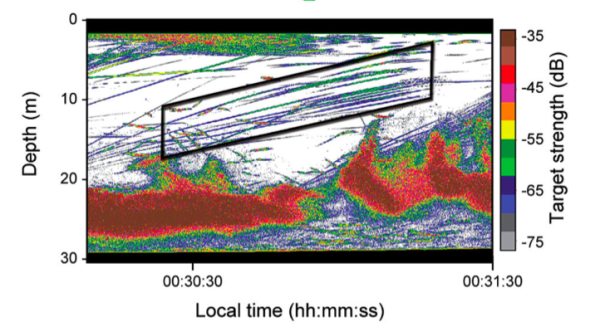
Between 2007 and 2011, Kelly Benoit-Bird and William Gilly tracked both schools and individuals of Dosidicus gigas with sonar in the Gulf of California with some startling findings. Two types of aggregations were seen: extremely dense groups in which individual squid could not be acoustically detected and loose but coordinated groups of followed parallel paths.

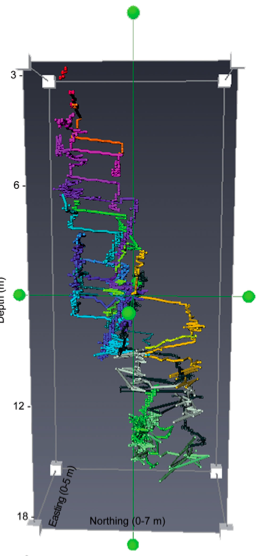
At night, individual and groups of up to 40 Humboldt Squid swam spirally upward at ~5 miles per hour from a school likely to prey upon fish. Benoit-Bird and Gilly documented 103, 763 occurrences of this swim pattern. Upon reaching one of the vertices of the spiral, individual squids would swim back and forth repetitively before continuing spiraling upward.
Movement in subgroups of squids were both coordinated in horizontally and vertically, i.e. depth, in the water column. As noted by the authors, “The resulting groups of tracks look like interwoven multiple helices anchored at their vertices by bouts of presumed feeding.” Individual squids in the subgroups would swim a very similar spiral pattern but would spaces themselves out vertically and regularly. Adjacent squids maintained at least a distance of ~10 inches and on average ~3 feet.
Interestingly, the greater the size difference between two squid the greater the distance between them. Why? It’s likely high levels of cannibalism, with smaller individuals being more prone to cannibalism by larger ones, helps squids remember to keep their distance.
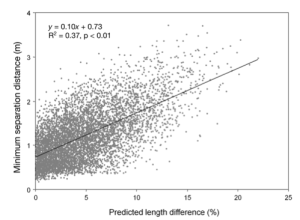
I take more comfort not less in knowing that Diablo Rojo coordinate schooling efforts. This implies some level of intelligence that may allow me to negotiate with them for my life before one of them consumes my brains. O’ wait that’s zombies…damn.

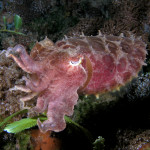
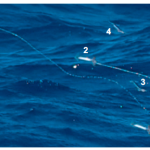
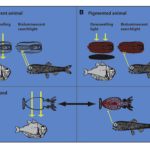

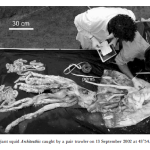
“Interestingly, the greater the size difference between two squid the greater the distance between them. Why? It’s likely high levels of cannibalism, with smaller individuals being more prone to cannibalism by larger ones, helps squids remember to keep their distance.”
Another explanation may come from those colossal eyes — along with their squeaks and tentacle-tongues, cephalopods are *visual* communicators (semaphore skin, body posture, course and speed). A recent paper on Architeuthis eyes suggests that they act like underwater telescopes of enormous light-gathering capacity. If their eyes scale with their bodies, larger squid can see farther; the
packschool uses larger intervals and can spread its net wider. There might even be spatial data on other pack-hunter species (wolves, orcas, crows) that can be applied to them Red Divils.Note the relevance to anti-submarine warfare.
Woooooo clever squid! Splendid coverage! (But the link to MEPS article is a mailto:, oddly enough.)
Despite the ubiquity of “diablo rojo/red devil” in media coverage of this species, in several years of field work I never heard a Mexican fisherman or scientist use the term. It’s possible I was just talking to the wrong people–but I recently asked a reporter who had interviewed quite a few Mexican sources about it, and she couldn’t say that she’d heard it either. Anyway, I’ve been avoiding the term until I hear some evidence that it’s more than a media invention.
Also, I’ve heard that people who strike a deal with Humboldt squid to learn guitar find to their dismay that they must then strike a second deal to acquire six more arms, in order to play what they’ve been taught.